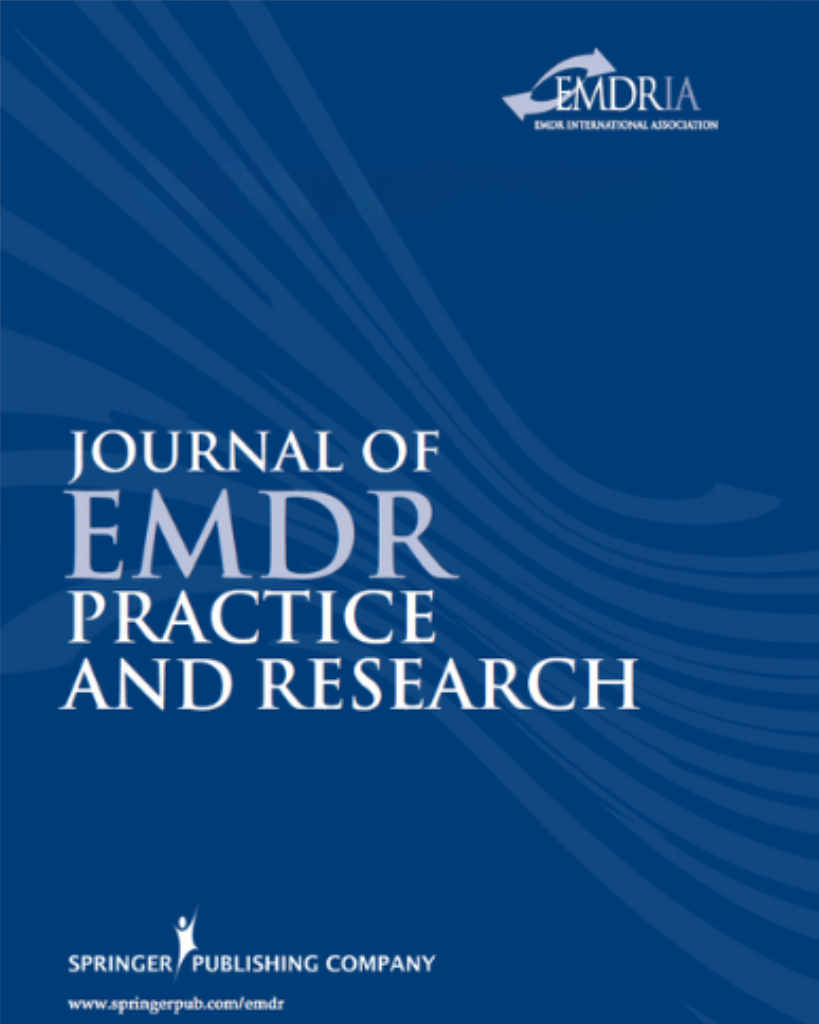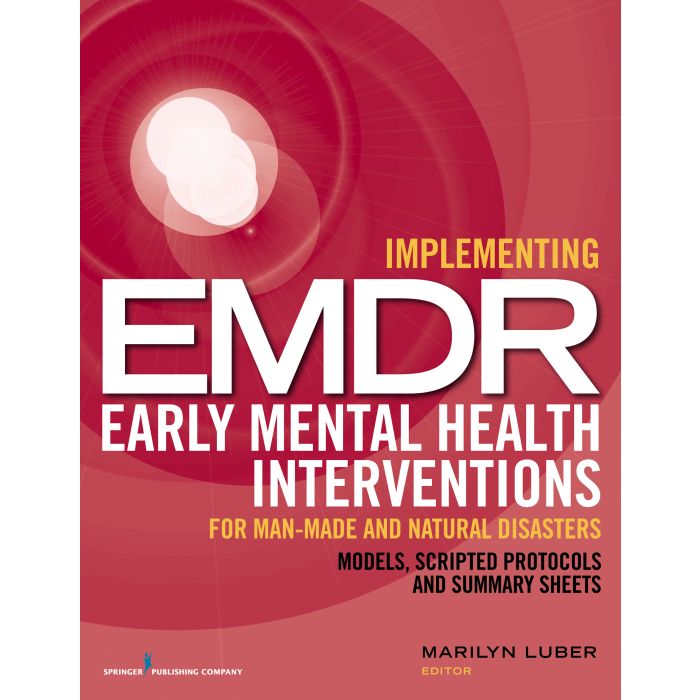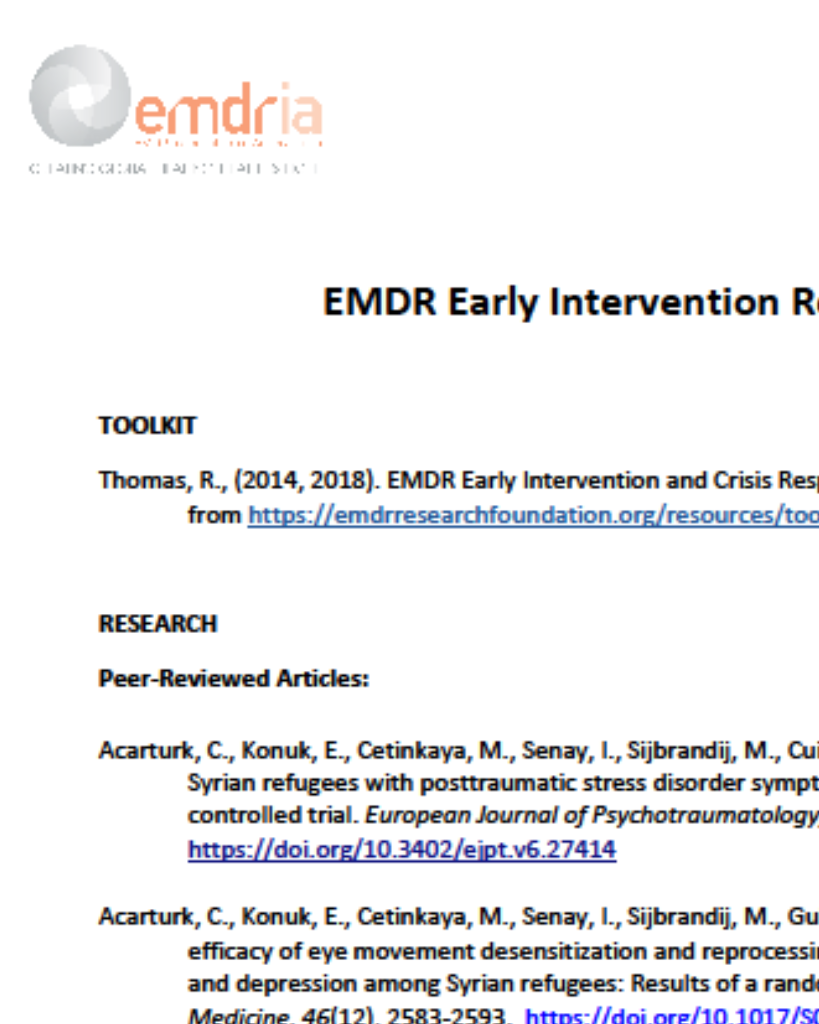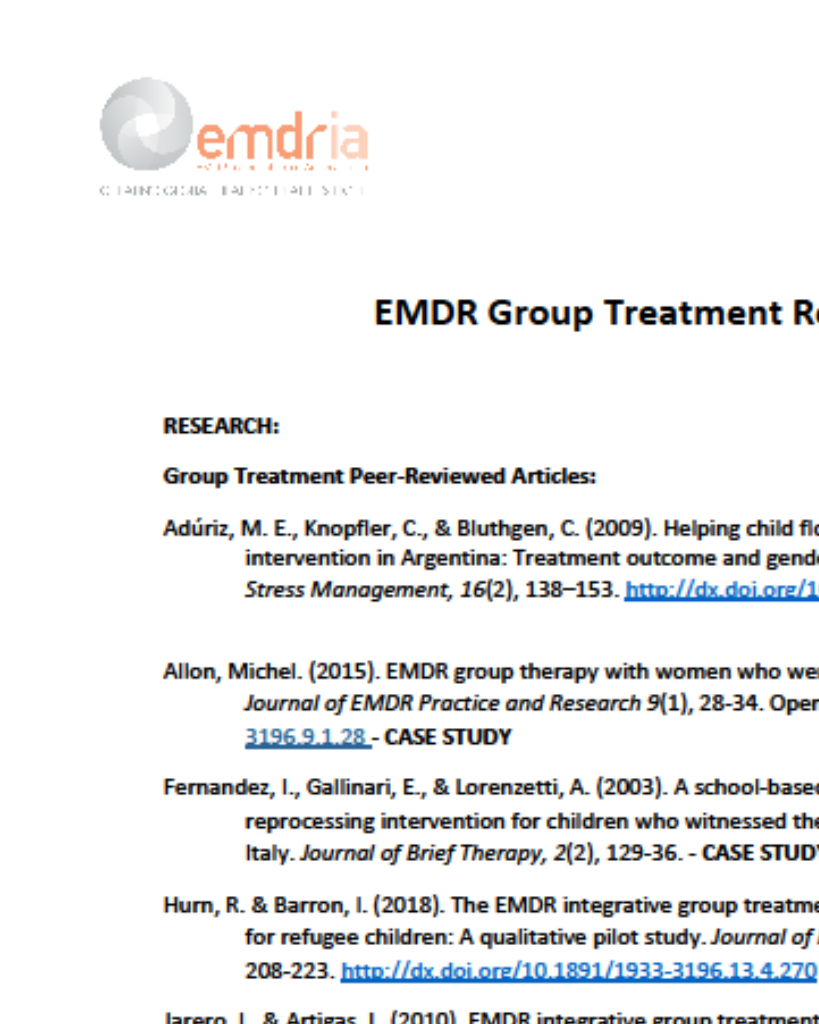Early EMDR Intervention (EEI): A Summary, a Theoretical Model, and the Recent Traumatic Episode Protocol (R-TEP)
This article examines existing EMDR early intervention (EEI) procedures, presents a conceptual model, and proposes a new comprehensive protocol: the Recent-Traumatic Episode protocol (R-TEP).
Article Abstract
“This article examines existing early EMDR intervention (EEI) procedures, presents a conceptual model, and proposes a new comprehensive protocol: the Recent-Traumatic Episode protocol (R-TEP). A review of research and important professional issues regarding application and parameters are presented. The commonly used EEI protocols and procedures are summarized, with the inclusion of descriptive case examples from the Lebanon war and a review of related research. Then a theoretical model is presented in which traumatic information processing is conceptualized as expanding from a narrow focus on the sensory image (perceptual level) to a wider focus on the event/episode (experiential level) and finally to a broad focus on the theme/identity (meaning level). The relationship of this model to the Recent-Traumatic Episode protocol is articulated and case examples are presented. Theoretical speculations are discussed relating to attention regulation and the Adaptive Information Processing (AIP) model. Further research is encouraged.”
—Description from publisher
Article Access
Open Access
Shapiro, E., & Laub, B. (2008). Early EMDR Intervention (EEI): A Summary, a Theoretical Model, and the Recent Traumatic Episode Protocol (R-TEP). Journal of EMDR Practice and Research, 2(2), 79–96. https://doi.org/10.1891/1933-3196.2.2.79
About the Journal
Journal of EMDR Practice and Research (JEMDR) is a peer-reviewed publication devoted to integrative, state-of-the-art papers about EMDR therapy. It is a broadly conceived interdisciplinary journal that stimulates and communicates research and theory about EMDR therapy and its application to clinical practice. JEMDR is the official publication of the EMDR International Association.
Date
June 1, 2008
Creator(s)
Elan Shapiro, Brurit Laub
Topics
Tragedies
Practice & Methods
AIP, EMDR Early Intervention, Protocols
Extent
18 pages
Publisher
Springer Publishing Company
Rights
Copyright © 2008 EMDR International Association
APA Citation
Shapiro, E., & Laub, B. (2008). Early EMDR Intervention (EEI): A Summary, a Theoretical Model, and the Recent Traumatic Episode Protocol (R-TEP). Journal of EMDR Practice and Research, 2(2), 79–96. https://doi.org/10.1891/1933-3196.2.2.79
Series
2
Installment
2
Audience
EMDR Therapists
Language
English
Content Type
Peer-Reviewed
Original Source
Journal of EMDR Practice and Research
Access Type
Open Access





